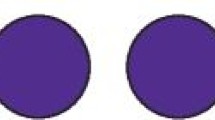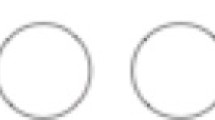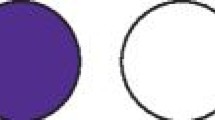Abstract
Objective To investigate current strategies of acute management of irreversible pulpitis by general dental practitioners.
Design A postal survey was sent to a representative sample based on postal code to 180 dentists registered with the General Dental Council in the North East of England. The questionnaire identified general dental practitioners' strategies for the diagnosis and acute management of irreversible pulpitis.
Results One hundred and three questionnaires were returned. Irreversible pulpitis was primarily diagnosed from patients' signs and symptoms. There was a high confidence in anaesthetising a tooth with irreversible pulpitis. Treatment was undertaken with either pulpotomy (with a view to single or multi-stage orthograde root canal treatment) or full extirpation in just over half of respondents (51%). Seventy-one percent of respondents reported using different intrapulpal medicaments. Antibiotics were 'frequently' prescribed in cases of irreversible pulpitis by 25% of respondents. For endodontic procedures, dental dam usage was generally low and used 'occasionally' or 'never' by 40% of respondents.
Conclusions Antibiotics were being inappropriately prescribed in the management of irreversible pulpitis, transgressing from NICE guidelines on antibiotic usage. Rubber dam use is not universal during the initial management of pulpitis, or during the definitive endodontic procedure, impacting upon the safety and predicility of outcome. Respondents often placed medicaments into the pulp, in spite of a lack of evidence for their efficacy.
This is a preview of subscription content, access via your institution
Access options
Subscribe to this journal
Receive 24 print issues and online access
$259.00 per year
only $10.79 per issue
Buy this article
- Purchase on Springer Link
- Instant access to full article PDF
Prices may be subject to local taxes which are calculated during checkout




Similar content being viewed by others
References
American Association of Endodontists. Glossary of Endodontic Terms: Ninth Edition. 2015. Available online at https://www.aae.org/specialty/clinical-resources/glossary-endodontic-terms/ (accessed March 2020).
NHS Digital. Adult Dental Health Survey. 2009. Available online at https://digital.nhs.uk/data-and-information/publications/statistical/adult-dental-health-survey (accessed March 2020).
Hargreaves K M, Keiser K. Local anesthetic failure in endodontics. Endod Topics 2002; DOI: 10.1034/j.1601-1546.2002.10103.x.
Cohen H P, Cha B Y, Spangberg L S. Endodontic anaesthesia in mandibular molars: a clinical study. J Endod 1993; 19: 370-373.
Nusstein J, Reader A, Nist R, Beck M, Meyers W J. Anaesthetic efficacy of the supplemental intraosseous injection of 2% lidocaine with 1:100,000 edrenaline in irreversible pulpitis. J Endod 1998; 24: 487-491.
Nyerere J W, Matee M I, Simon E N. Emergency pulpotomy in relieving acute dental pain among Tanzanian patients. BMC Oral Health 2006; 6: 1.
Rosenberg P A. Clinical strategies for managing endodontic pain. Endod Topics 2002; 3: 78-92.
Farges J C, Alliot-Licht B, Renard E et al. 2015. Dental pulp defence and repair mechanisms in dental caries. Mediators Inflamm 2015; DOI; 10.1155/2015/230251.
Olgart L M, Edwall B, Gazelius B. Neurogenic mediators in control of pulpal blood flow. J Endod 1989; 15: 409-412.
Hasselgren G, Reit C. Emergency pulpotomy: pain relieving effect with and without the use of sedative dressings. J Endod 1989; 15: 254-256.
Taha N A, Khazali M A. Partial Pulpotomy in Mature Permanent Teeth with Clinical Signs Indicative of Irreversible Pulpitis: A Randomized Clinical Trial. J Endod 2017; 43: 1417-1421.
Witherspoon D E, Small J C, Harris G Z. Mineral Trioxide Aggregate pulpotomies: a case series outcomes assessment. J Am Dent Assoc 2006; 137: 610-618.
Agnihotry A, Fedorowicz Z, Van Zuuren E J, Farman A G, Al-Langawi J H. Antibiotic use for irreversible pulpitis. Cochrane Database Syst Rev 2016; DOI: 10.1002/14651858.CD004969.pub5.
Alghaithy R A, Qualtrough A J E. Pulp sensibility and vitality tests for diagnosing pulpal health in permanent teeth: a critical review. Int Endod J 2017; 50: 135-142.
Faculty of General Dental Practice. Selection criteria for dental radiography. 2018. Available online at https://www.fgdp.org.uk/guidance-standards/selection-criteria-dental-radiography (accessed March 2020).
Royal College of Surgeons of England. Restorative Dentistry Index of Treatment Need: Complexity Assessment. 2001.Available at https://www.rcseng.ac.uk/-/media/files/rcs/fds/publications/complexityassessment.pdf. (accessed March 2020).
Eren B, Onay E O, Ungor M. Assessment of alternative emergency treatents for symptomatic irreversible pulpitis: a randomised controlled trial. Int Endod J 2018; DOI: 10.1111/iej.12851.
Palmer N A, Pealing R, Ireland R S, Martin M V. A study of therapeutic antibiotic prescribing in National Health Service general dental practice in England. Br Dent J 2000; 188: 554-558.
Faculty of General Dental Practice. Antimicrobial Prescribing for General Dental Practitioners. 2012. Available online at https://www.fgdp.org.uk/shop/books/antimicrobial-prescribing-general-dental-practitioners (accessed March 2020).
Walton R E, Torabinejad M. Managing Local Anaesthesia problems in the endodontic patient. J Am Dent Assoc 1992; 123: 97-102.
Claffey E, Reader A, Nusstein J, Beck M, Weaver J. Anaesthetic efficacy of articaine for inferior alveolar nerve blocks in patients with irreversible pulpitis. J Endod 2004; 30: 568-571.
Reisman D, Reader A, Nist R, Beck M, Weaver J. Anaesthetic efficacy of the supplemental intraosseous infection of 3% mepivacaine in irreversible pulpitis. Oral Surg Oral Med Oral Pathol Oral Radiol Endod 1997; 84: 676-682.
Aggarwal V, Jain A, Kabi D. Anaesthetic efficiency of supplemental buccal and lingual infiltrations of articaine and lidocaine after inferior alveolar nerve block in patients with irreversible pulpitis. J Endod 2009; 35: 925-929.
Kennedy S, Reader A, Nusstein J, Beck M, Weaver J. The significance of needle deflection in success of the inferior alveolar nerve block in patients with irreversible pulpitis. J Endod 2003; 29: 630-633.
Goldberg S, Reader AM Drum M, Nusstein J, Beck M. Comparison of the anaesthetic efficacy of the conventional inferior alveolar, Gow-Gates, and Vazirani-Akinosi techniques. J Endod 2008; 34: 1306-1311.
Remmers T, Glickman G, Spears R, He J. The efficacy of IntraFlow intraosseous injection as a primary anaesthesia technique. J Endod 2008; 34: 280-283.
Bigby J, Reader A, Nusstein J, Beck M, Weaver J. Articaine for supplemental intraosseous anaesthesia in patients with irreversible pulpitis. J Endod 2006; 32: 1044-1047.
Meechan J G. Supplementary routes to Local Anaesthesia. Int Endod J 2002; 35: 885-896.
Vangheluwe J, Walton R. Intrapulpal injection: factors related to effectiveness. Oral Surg Oral Med Oral Pathol Oral Radiol Endod 1997; 83: 38-40.
Pashley E L, Nelson R, Pashley D H. Pressures created by dental injections. J Dent Res 1981; 60: 1742-1748.
Corbett I P, Kanaa M D, Whitworth J M, Meechan J G. Articaine infiltration for anaesthesia of mandibular first molars. J Endod 2008; 34: 514-518.
Poorni S, Veniashok B, Senthilkumar A D, Indria R, Ramachandran S. Anaesthetic efficiency of four percent articaine for pulpal anaesthesia by using inferior alveolar nerve block and buccal infiltration techniques in patients with irreversible pulpitis: A prospective randomized double-blind clinical trial. J Endod 2011; 37: 1603-1607.
Garisto G A, Gaffen A S, Lawrence H P, Tenenbaum H C, Haas D A. Occurrence of paraesthesia after dental local anaesthetic administration in the United States. J Am Dent Assoc 2010; 141: 836-844.
Hillerup S, Jensen R. Nerve injury caused by mandibular block analgesia. Int J Oral Maxillofac Surg 2006; 35: 437-443.
Ehrmann E H, Messer H H, Adams C G. The relationship of intracanal medicaments to postoperative pain in endodontics. Int Endod J 2003; 36: 868-875.
Athanassiadis B, Abbott P V, Walsh L J. The use of calcium hydroxide, antibiotics and biocides as antimicrobial medicaments in endodontics. Austr Dent J 2007; DOI: 10.1111/j.1834-7819.2007.tb00527.x.
European Society of Endodontology. Quality guidelines for endodontic treatment: consensus report of the European Society of Endotontology. Int Endod J 2006; 39: 921-930.
Palmer N O, Ahmed M, Grieveson B. An investigation of current endodontic practice and training needs in primary dental care in the North West of England. Br Dent J 2009; DOI: 10.1038/sj.bdj.2009.473.
Whitworth J M, Seccombe G V, Shoker K, Steele J G. Use of rubber dam and irrigant selection in UK general dental practice. Int Endod J 2000; 33: 435-441.
Abbott P V. Factors associated with continuing pain in endodontics. Aust Dent J 1994; 39: 157-161.
Van Nieuwenhuysen J P, Aouar M, Dhoore W. Retreatment or radiographic monitoring in endodontics. Int Endod J 1994; 27: 75-81.
Jenkins S M, Hayes S J, Dummer P M. A study of endodontic treatment carried out in dental practice within the UK. Int Endod J 2001; 34: 16-22.
Saunders W P, Chestnutt I G, Saunders E M. Factors influencing the diagnosis and management of teeth with pulpal and periradicular disease by general dental practitioners. Part 1. Br Dent J 1999; 187: 492-497.
Zehnder M. Root canal irrigants. J Endod 2006; 32: 389-398.
Ahmed I A. Rubber dam usage for endodontic treatment: a review. Int Endod J 2009; 42: 963-972.
Author information
Authors and Affiliations
Corresponding author
Electronic supplementary material
Rights and permissions
About this article
Cite this article
Gemmell, A., Stone, S. & Edwards, D. Investigating acute management of irreversible pulpitis: a survey of general dental practitioners in North East England. Br Dent J 228, 521–526 (2020). https://doi.org/10.1038/s41415-020-1419-8
Published:
Issue Date:
DOI: https://doi.org/10.1038/s41415-020-1419-8



